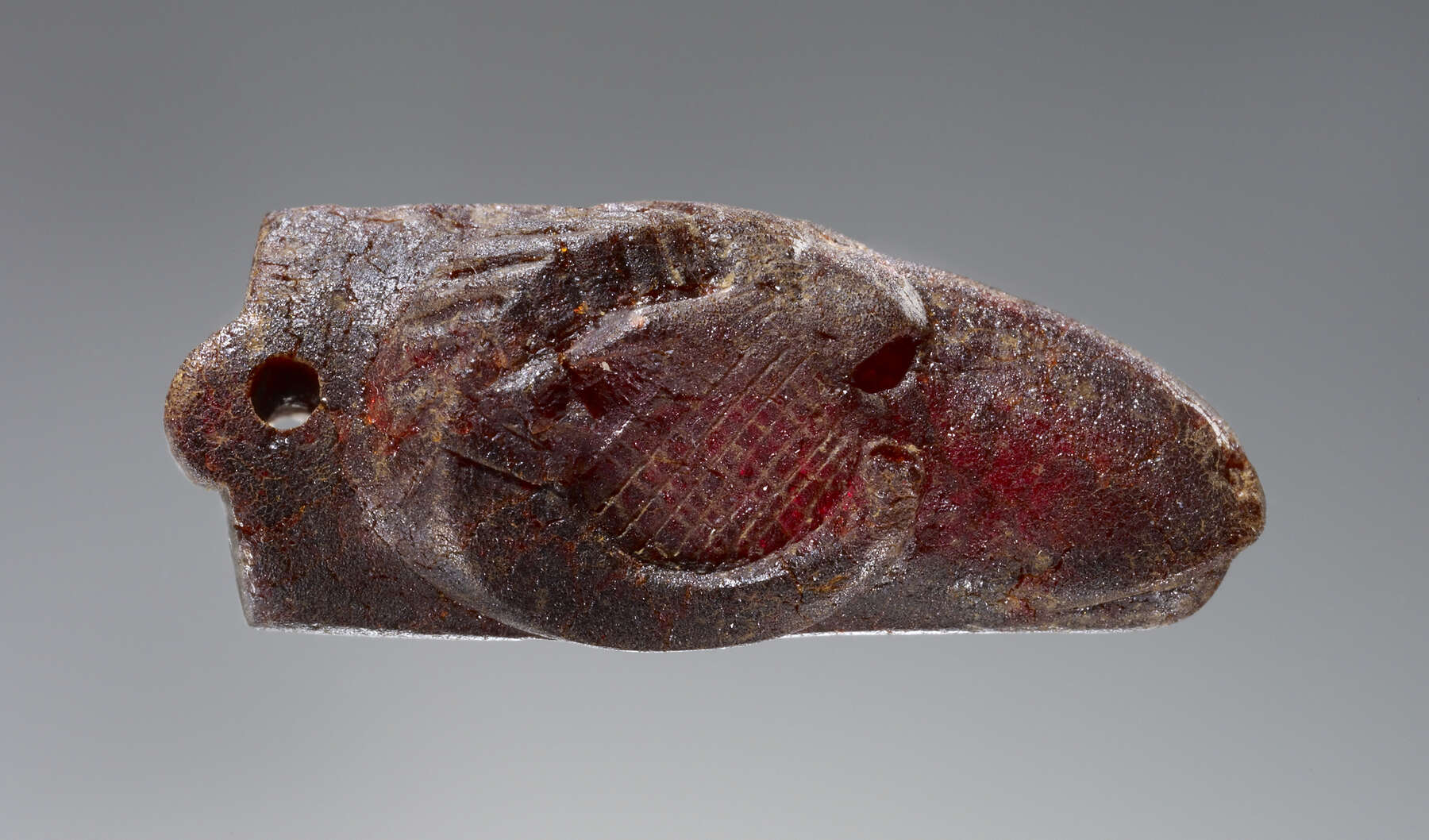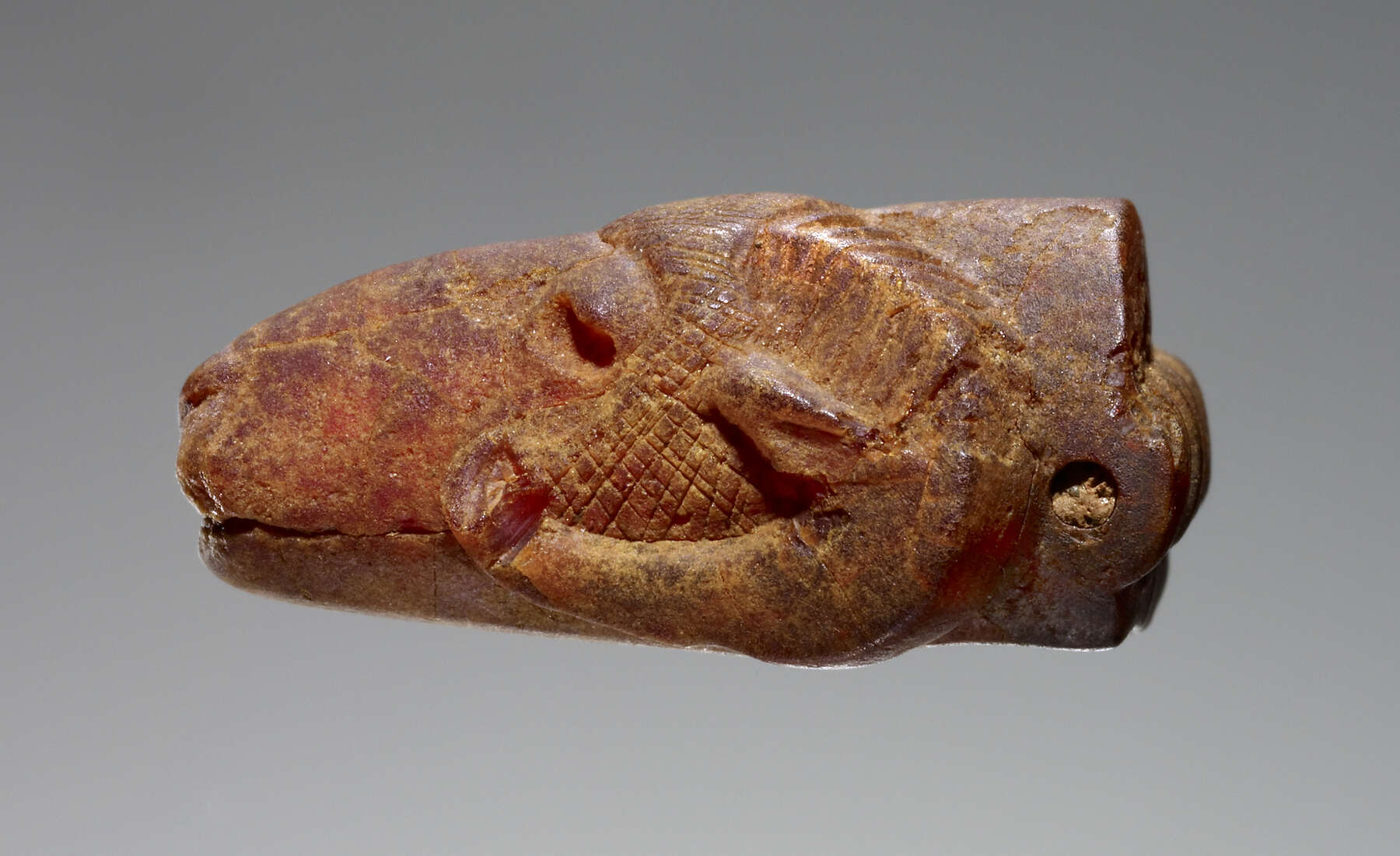46. Pendant: Ram’s Head
| Accession Number | 77.AO.81.16 |
| Culture | Italic |
| Date | 500–400 B.C. |
| Dimensions | Length: 32 mm; width: 16 mm; depth: 13 mm; Weight: 3.5 g |
| Subjects | Ram |
Provenance
–1977, Gordon McLendon (Dallas, TX), donated to the J. Paul Getty Museum, 1977.
Condition
The pendant is intact, with only minute chips at the tip of the left ear and at the tip of the right horn. There is crazing overall. Several cracks are visible, most notably under the left side of the chin. There is a small vertical crack extending across the left side of the mouth. The piece has been treated with amber oil. The surface is a dark, dull red. In transmitted light, the pendant is dark red but does not itself transmit very much light. No inclusions are evident.
Description
This head and the following three— (cat. no. 47), (cat. no. 48), and (cat. no. 49)—are attributed here to the same hand and are thus described as a group in this entry. (The previous head , cat. no. 45 is also likely by the same hand.) Three—77.AO.81.16, , and —are nearly identical in weight, mass, type, form, and style. All four have nearly identical plastic suspension devices incorporated into the pendant design: in each, a hole is drilled through the neck, and not through the device. is slightly different, showing a greater affinity to live sheep, the head being higher and deeper, and the angle of the lower skull more natural. The other three heads are in comparison longer and narrower in profile and more slender in top or bottom view. Identical features of all four include the shape of the hollow eyes—hemispheric concavities with heavy overhanging lids. All four have fleece indicated on the poll, the back of the neck, and the cheeks, with fine, irregularly spaced cross-hatching. The horns of each are carinated from base to tip in a chevron pattern, and in each small ears lie directly on the horns. On the upper side, the ears are cut away, leaving small, shelflike plateaus. On each, the rendering of the ears and the horns is especially careful. The head of 77.AO.81.16 is longer and more slender than the heads of the other three. On all four, tiny V-shaped incisions indicate the nares.
Traces of tools remain on all the pendants, indicating the use of a sharp tool (or sharp edge) for the cross-hatching, a graver, and abrasive materials for the polishing. Inside one of the sets of holes, the marks of a drill are apparent. On all four of the pendants in this group, the hole for suspension is located in the neck, very near to the plane of the back. The holes range in diameter from 1.62 mm to 2.2 mm. All four pendants would have hung nose downward.
Discussion
The differences among the pendants of this group are probably owing to the form of the original drops of amber from which they were made. In the case of this pendant, the blank must have been more rectangular than those of the other three.




